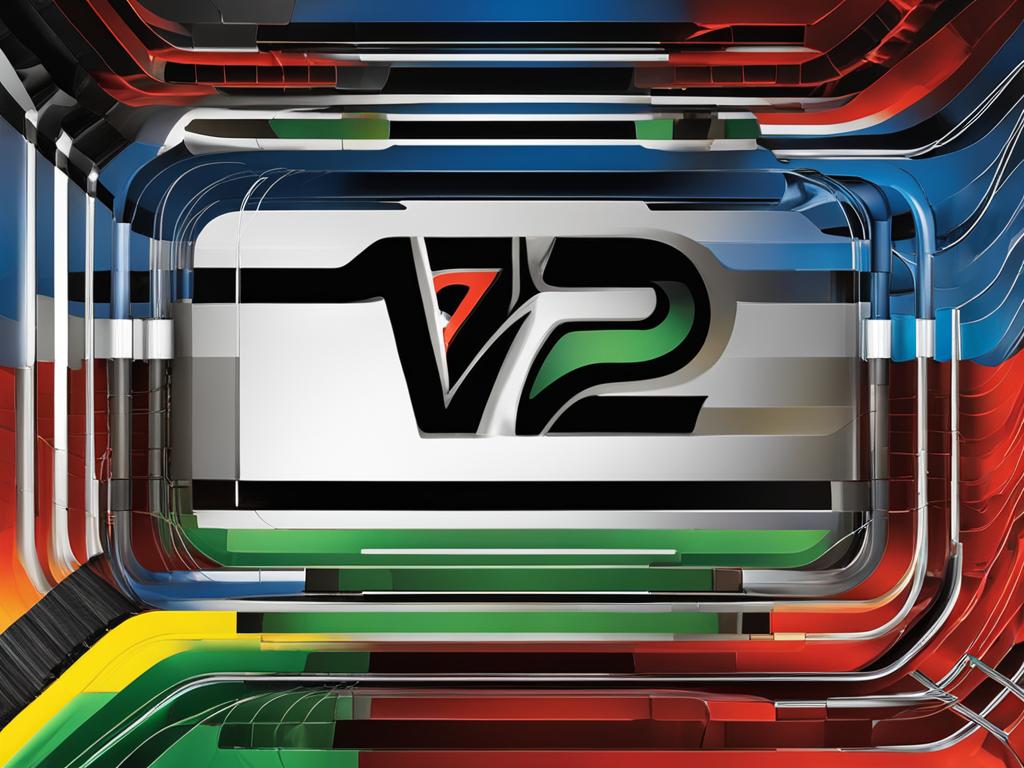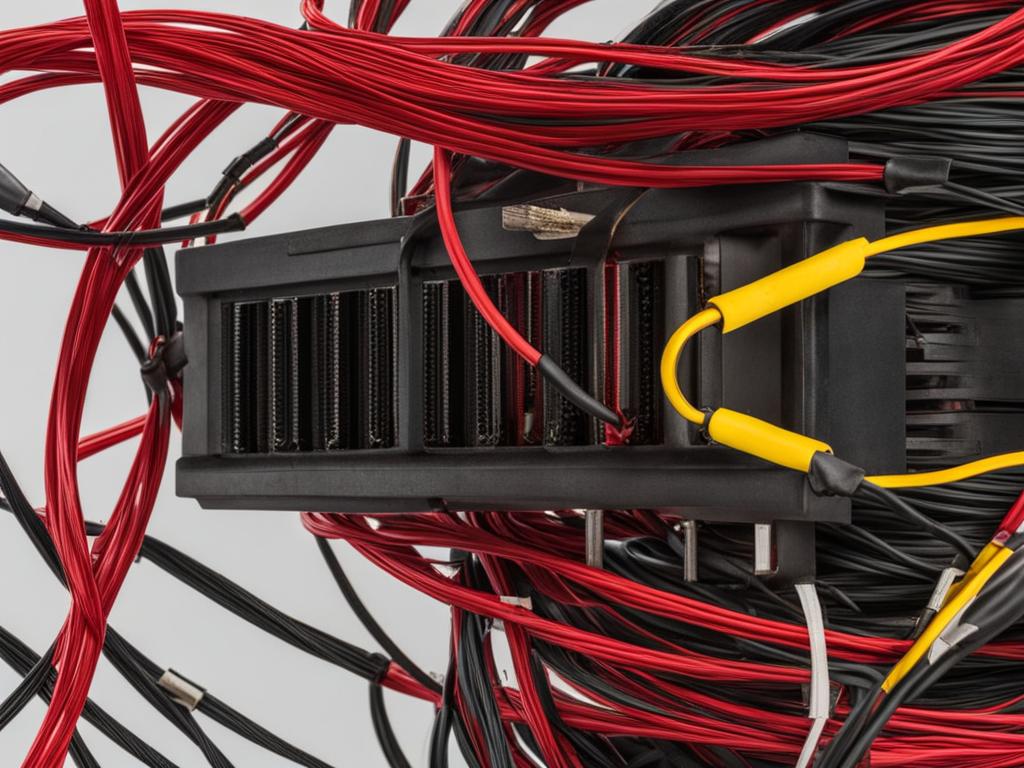When wiring a house, one of the common choices for residential branch wiring is Romex cables. Romex is a type of electrical conductor with non-metallic sheathing. There are different types of Romex cables categorized by the National Electrical Code (NEC) as underground feeder (UF) or non-metallic sheathed cable (NM and NMC). The gauge of the wire and the number of conductors determine the type of Romex cable. The most commonly used Romex cables are 12/2 and 12/3. They have some key differences that are important to know for your electrical projects.
Key Takeaways:
- Understanding the differences between 12/3 and 12/2 wires is crucial for your electrical projects.
- 12/2 wire is commonly used for lighting and outlet circuits in homes, while 12/3 wire is suitable for three-way light switches and wiring larger appliances.
- Consider your specific needs, such as the type of circuits and appliances, cost, and voltage drop when choosing between 12/3 and 12/2 wire.
- Using a 12 gauge wire helps minimize voltage drop and ensures a continuous draw of current.
- Both 12/3 and 12/2 wires have pros and cons, so weigh the advantages and disadvantages before making a decision.
Understanding 12/2 Wire
When it comes to residential electrical wiring, 12/2 wire is a popular choice for lighting and outlet circuits. This type of wire is designed to carry up to 20 Amps of current, making it suitable for various household applications. Let’s take a closer look at the features and considerations of 12/2 wire.
What is 12/2 Wire?
The “12” in 12/2 wire refers to the gauge of the wire, which determines its thickness and capacity to carry electrical current. Wire gauges typically range from 10 to 14, with smaller numbers indicating thicker wires. In the case of 12/2 wire, it consists of two conductors within the cable: a black (hot) wire and a white (neutral) wire.
Appropriate Use of 12/2 Wire
One of the key advantages of 12/2 wire is its ability to handle higher power loads, making it suitable for larger appliances connected to outlets. If you plan to wire heavy-duty appliances such as refrigerators or air conditioners, using 12/2 wire is recommended.
However, it’s important to consider the specific needs of your project. If you are wiring only lights and low-power devices, a 14 gauge wire can suffice. This can help save costs while still maintaining a safe and functional electrical system.
Voltage Drop Consideration
When using 12/2 wire, it’s essential to consider voltage drop, especially if you have multiple outlets on the same line. Voltage drop refers to the decrease in electrical voltage over the length of a wire, which can affect the performance of electrical devices and lead to dim lights or reduced power output.
One important consideration when using 12/2 wire is to minimize voltage drop and ensure a continuous and efficient draw of current for your electrical system.
Pros and Cons of 12/2 Wire
Like any wiring option, 12/2 wire has its pros and cons. Here are the key points to consider:
| Pros of 12/2 Wire | Cons of 12/2 Wire |
|---|---|
| Can handle higher power loads | May be more expensive than lower gauge wires |
| Minimizes voltage drop for improved performance | Not necessary for low-power lighting circuits |
Understanding 12/3 Wire
When it comes to residential wiring, 12/3 wire is a popular choice alongside 12/2 wire. While they share similarities, the key difference is that 12/3 wire has three conductors instead of two. It consists of a black (hot) wire, a white (neutral) wire, and a red (hot) wire. This additional conductor makes 12/3 wire a versatile option for various electrical applications.
One of the main advantages of 12/3 wire is its compatibility with three-way light switches. With a three-way switch, you can control a light fixture from two different locations. The extra conductor in the 12/3 wire allows for the connection between these switches, enabling convenient lighting control.
Additionally, 12/3 wire is suitable for wiring larger appliances that require more than one hot wire. It provides the necessary conductors to supply power to these appliances effectively.
Like 12/2 wire, 12/3 wire is capable of carrying up to 20 Amps of current, making it suitable for various residential electrical needs.
Pros and Cons of Using 12/2 Wire
When it comes to electrical wiring, the choice between different types of wires is crucial for the success of your project. One popular option is the 12/2 wire, which offers its own set of advantages and disadvantages.
Advantages of 12/2 Wire
Using 12/2 wire comes with several benefits:
- Handling more power: 12/2 wire is designed to carry up to 20 Amps of current, making it suitable for larger appliances that require more electrical power.
- Minimizing voltage drop: If your wiring involves multiple outlets on the same line, using 12/2 wire helps to minimize voltage drop. This ensures a continuous draw of current without any significant loss.
Disadvantages of 12/2 Wire
Despite its advantages, there are a few considerations to keep in mind when using 12/2 wire:
- Not necessary for lighting circuits: If you’re only wiring lighting circuits, a 14 gauge wire can suffice instead of the 12/2 wire. Using a 12/2 wire for lighting alone may not be necessary, resulting in unnecessary costs and complexity.
- Comparatively expensive: 12/2 wire is generally more expensive compared to 14 gauge wire. Depending on the scale of your project, the higher cost of 12/2 wire may impact your budget.
Considering these pros and cons will help you make an informed decision about whether 12/2 wire is the right choice for your electrical wiring needs.

| Advantages | Disadvantages |
|---|---|
| Handles more power | Not necessary for lighting circuits |
| Minimizes voltage drop | Comparatively expensive |
Pros and Cons of Using 12/3 Wire
When deciding on the type of wire to use for your electrical projects, it’s important to consider the pros and cons of each option. Here, we will explore the advantages and disadvantages of using 12/3 wire.
Advantages of 12/3 Wire
- Additional Conductor: One of the main advantages of 12/3 wire is that it has an additional conductor compared to 12/2 wire. This extra conductor, the red (hot) wire, allows for the installation of three-way light switches. This feature provides greater flexibility in controlling lights from multiple locations, adding convenience and functionality to your home.
- Flexibility for Larger Appliances: 12/3 wire is also beneficial when wiring larger appliances that require multiple hot wires. With the three conductors in 12/3 wire – black (hot), white (neutral), and red (hot) – you have the capacity to power appliances that have more complex electrical needs. This flexibility makes 12/3 wire a suitable choice for kitchen appliances, HVAC systems, and other heavy-duty equipment.
Disadvantages of 12/3 Wire
- Not Necessary for Lighting Circuits: While 12/3 wire offers additional capabilities, it may not be necessary for lighting circuits that do not require three-way switches. If you are only wiring lighting fixtures that will be controlled from a single switch, a simpler and more cost-effective option like 12/2 wire or even a 14 gauge wire can be sufficient.
- Higher Cost: Another factor to consider is the cost of 12/3 wire compared to other gauge wires. Due to its added capabilities and extra conductor, 12/3 wire is generally more expensive than 12/2 wire or wires with lower gauges. Therefore, if you don’t need the additional conductor for your specific project, opting for a less expensive wire may be more cost-effective.
In summary, the advantages of using 12/3 wire include the ability to install three-way light switches and the flexibility to wire larger appliances. However, it may not be necessary for simpler lighting circuits and can be more expensive compared to other wire options. Consider your specific needs and budget when deciding whether 12/3 wire is the right choice for your electrical projects.
Conclusion
When it comes to choosing between 12/3 and 12/2 wire for your electrical projects, it’s crucial to consider your specific requirements. If you need to wire larger appliances or install three-way light switches, 12/3 wire is the appropriate choice. However, for lighting circuits alone, a 12/2 wire or even a 14-gauge wire can be sufficient.
Cost and voltage drop are also significant factors to weigh when making your decision. 12/2 wire is generally more affordable compared to 12/3 wire. Additionally, using a 12-gauge wire helps minimize voltage drop and ensures a steady flow of current, especially if you have multiple outlets on the same line.
By understanding the distinctions between 12/3 and 12/2 wire, you can make an informed choice for your electrical projects. Consider your specific needs, factor in cost and voltage drop, and select the wire that best aligns with your requirements. Whether it’s 12/3 or 12/2, the key is knowing what works best for your unique situation.
FAQ
What is the difference between 12/3 and 12/2 wire?
The main difference between 12/3 and 12/2 wire lies in the number of conductors. 12/2 wire has two conductors—a black (hot) wire and a white (neutral) wire—while 12/3 wire has three conductors: a black (hot) wire, a white (neutral) wire, and a red (hot) wire.
Which wire should I use for lighting circuits in my home?
For lighting circuits, you can use either 12/2 or 14 gauge wire. 12/2 wire is recommended if you have larger appliances connected to outlets on the same circuit to handle more power and minimize voltage drop. However, if you are only wiring lights, a 14 gauge wire can suffice.
When should I use 12/3 wire?
12/3 wire is suitable for applications that require three-way light switches, where you have control of a light fixture from two different locations. It can also be used for wiring larger appliances that require more than one hot wire.
What are the advantages of using 12/2 wire?
12/2 wire can handle more power, making it suitable for larger appliances. It also helps to minimize voltage drop, especially if you have multiple outlets on the same line. However, it may be more expensive compared to 14 gauge wire.
What are the advantages of using 12/3 wire?
12/3 wire offers the advantage of an additional conductor, allowing for the installation of three-way light switches. It also provides flexibility for wiring larger appliances that require multiple hot wires. However, it may be more expensive compared to 12/2 wire or other gauge wires.
